|
I’ve heard folks in my denomination talk about “high impact churches.” It's a phrase that's been out there for a few years, in particular an eponymous book by Linus Morris. His primary shift is thinking about church not so much as being situated in a geographic location but within large scale social network. This move was important a quarter of a century ago when Morris published with the rise of the internet and globalization. I think we've seen a cultural migration away from dislocation as a norm toward place-centered living. Anecdotally, people just are not transient as they used to be. People tend to grow where they are planted. The trend is playing out during the last year. If people are moving, it is close to where they already are:
"This local movement means that even for residents who did move further from an urban center, many remained part of the same regional economy. And most of those who moved further afield tended to stay within a radius of 100 to 150 miles."- "More Americans Are Leaving Cities But Don't Call It an Urban Exodus" - Bloomberg News, April 26, 2021 The "same regional economy" is the same as a megaregion, which I written about elsewhere on this blog. People are moving but staying within a place called home. So, one's social network is the same as sharing a place: familiarity in particularity. My denomination leans toward defining high impact churches as those that start with a large core of attenders, around 200 (multiplynaz.org). These kinds of churches are also actively working toward getting people involved in the life of the church, usually through a system of discipleship groups. Much of the focus is building internal capacity for nourishing the faithful and reaching the like-minded. It's a consumer-driven approach to building the church. I was never really satisfied with these notions of what church should look. The cynical side of me thinks that the emphasis is on HYPE -- just trying to get people in the door and find ways to keep them around. The non-cynical side of me wonders if evangelism of attraction will actually lead toward discipleship: the true calling of the church is to make disciples. In 2020, I read an article on 11 Traits of Churches That Will Impact the Future by Carey Nieuwhof that fleshed out what I think I mean by “high impact churches.” Nieuwhof wrote this article in 2013. It could easily have been written yesterday. It has given structure to what a high impact church might look like. Nieuwhof’s thoughts on what these kinds of things that could be considered high impact churches bear repeating: “When you learn to say no to the preferences of some current members, you learn to say yes to a community that is ready to be reached.” “If you can’t make a decision within 24 hours, your process is too slow.” “In fact, more and more larger churches will start embracing smaller venues, locations and partnerships to keep growing. A great number of smaller venues might be a hallmark of future churches making an impact.” “Get innovative and start looking at portable and non-traditional ways of growing your ministry.” “Churches that understand that embracing questions is as important as providing immediate answers will make an impact.” “Churches in decline often think in terms of what they can get from people - money, time, growth, etc.” “Churches that decide they will hold the message sacred but tailor the experience to an ever shifting culture will be more effective.” From Nieuwhof’s article, I narrowed my emphasis on eight aspects of high impact churches. When I see these concepts at work in a church, there’s a good chance they are making an impact on their community. These practices are not based on church size or financial capacity. I believe all of these descriptors need to be present for a local church to be considered a high impact church. If they are not all present, then these aspects become aspirations for what a church seeks to become in its community. outsider focus Overview: Understands local context, knows the map, makes strangers into friends Questions toward becoming outsider focused: --Who lives in your neighborhood? --What contribution does your church make to this neighborhood? --Do they know your name? Do you know theirs? --Do they invite you to participate in their lives? partnership plan Overview: Realizes they cannot go it alone, becomes connectional, seeks district oversight and guidance, leans on a prayer network, looks for local sources of funding, enters into a larger global family Questions toward building a partnership plan: --What organizations are doing what you think the church can/should be doing? --How are you helping them do this work? --What gifts does your church have to offer these organizations? --If there is not an organization doing this work, how can your church start doing it? leadership team Overview: Rule of Four in team leadership, each position is a function, response-ability, self-perpetuating Questions toward pulling together a leadership team: --Who are the four people that are always there that dream big and make things happen? --Who needs to be involved in the decision-making --What are examples of tangible and memorable evidence of the trust that has been built between these leaders and the rest of the church? adaptable ministry Overview: No canoes (Tod Bolsinger), learns to say no to insiders to include outsiders, cultural shifts, does what is necessary, focused on a few ministries, inter-culturally sensitive Questions toward implementing adaptable ministry: --How quickly can a ministry be started in church for the community? --What is the ratio of active volunteers to regular church attenders? --Where can be found written expectations for volunteers? --How often is training held for new volunteers? --What kind of gratitude is shown to volunteers? --What are active ways the church reaches out to the marginalized - not like the majority of those already in the church? --How are different languages and cultures from your community represented in your church? flexible footprint Overview: Little overhead, just in time planning, ready to move, costs in people. “Get innovative and start looking at portable and non-traditional ways of growing your ministry.” Questions toward having a flexible footprint: --Who decides when a new ministry might begin? Or when it might end? --How many “circles” or smaller groups of church folks meet outside of regular worship gatherings? --Where are there places to meet for church folks to meet together beyond gatherings at church? discipling culture Overview: Multiple avenues, everyone involved, participatory, movement toward everyone discipling someone else Questions toward a discipling culture: --What is the next step for a new believer in your church? --How are these next steps communicated to new believers? --How many members have actively taken part in making new disciples in the past year? --What is considered essential knowledge and practice for disciples in your church? --Who or what criteria in your local church determine what is essential for making disciples? --What does this pathway of disciple look like in your church? online presence Overview: Social presence, connectivity: “Sure, face to face is deeper, but people will tell you things online they can’t muster the courage to tell you face-to-face.” Questions toward creating an online presence: --Does your church have a website or Facebook page that is updated on a weekly basis? --What are ways for someone to participate in a worship service or discipleship group even though they are online? --What are ways people can be engaged via message or comment boards in an online environment? --Who tracks online involvement in your church? --What online resources available for discipleship opportunities, financial giving, registering for events or ministry sign-ups? --In what ways will someone be able to find out what is happening at your church this month by going to the website? citywide engagement Overview: Planted to grow here not there, able to engage a transient society, has social awareness, recognizes their place in society, stones in a stream Questions toward engaging the whole city: --In what ways does your church provide avenues to connect to the larger community around the church? --How does the church find ways to meet with or partner with other churches even if it is just with other church pastors? --How does the church offer its voice to concerns within the larger church community? --What markers in the church’s building, signage, website, and events that show evidence of its community’s presence? --Where do people live that regularly attend, participate or have a connection to the church? “give not get” mentality Overview: Asks what the church can do for you not to what it can get from you : “Church that will make an impact on the future will be passionate about what they want for people - financial balance, generosity, the joy of serving, better families, and of course, Christ at the center of everyone’s life.” --What is the church doing for its community without any strings attached or return on investment?
2 Comments
About one-fourth of the churches in the Front Range megaregion are designated as ethnic. Only 15 have assigned pastors; one is in a dual charge assignment. Two of the 15 assigned pastors are women. Twelve percent have more than 75 in average worship attendance. One out of every ten Nazarene members on this megaregion belongs to an ethnic church. The predominant ethnicity is Hispanic. ResourcesThere are six female Nazarene senior assigned pastors in the Front Range megaregion. That's 8% of the senior assigned pastors here. The largest church attendance with a female pastor is 92; however, the median attendance is 25. Two-thirds of the women have served in their current assignment for less than eight years. It seems as if there is going to be enough churches to reach the coming population expansion in this megaregion, women seeking ministry will have to be sought, encouraged, and nurtured into ministry just as much as men. There is a clear emphasis on male leadership when there honestly may not be enough men available or responding to the call to preach. Whatever may be the case, where are the women and who will open doors, clear the pathway, and become mentors for them? What would it take for a current pastor to mentor more women into ministry? ResourcesThere are 75 senior assigned pastors on this megaregion, one pastor has a dual assignment in two churches. There are 17 churches without an assigned pastor. The median tenure for pastors on this megaregion is 2012. That means half of the pastors have been in their current assignment since this date. One-third of these pastors have been in their assignments for less than four years, and another one-third for more than eight years. Eighteen pastors have been in their assignments for more than a decade. Median worship attendance at churches with an assigned pastor is 57. This is for a population of 5.5 million (see second image below). This megaregion will add another 4.8 million people in the next three decades. If the current number of pastors (75) is maintained during the population growth that will occur, the following ratios apply: One pastor for 73,333 people (2010) One pastor for 92,000 people (2025) One pastor for 136,000 people (2050) ResourcesThe Front Range megaregion includes the urbanization along the eastside of the Rockies from Cheyenne in the north toward Albuquerque in the south. I have extended the megaregion's territory further south to El Paso, Texas following the Rio Grande River. This megaregion also includes the urban island of the Salt Lake city metro area in Utah. The megaregion is very similar to the elongated megaregions of the Gulf Coast and Arizona Sun in that they intermingle or overlap the Mexican border. Again, national and state borders do not always show separation between where people choose to live, work, and do business. These kinds of borders also have very little to do with how people come to Christ and choose to gather for church fellowship. The missional impulse flows from where people gather. The Front Range megaregion is smaller than most of the other megaregions with just over 5 million people. It will also double in size in the next thirty years to over 10 million inhabitants. There have been just over two hundred Nazarene churches (209) started or organized in this megaregion. Of these churches, 93 are still active. The previous two decades have been the most proliferate with 39 churches started or organized. By comparison, 42 churches were started or organized between 1970 to 1999. The oldest active churches are the First Churches of Salt Lake City and Denver, started in 1903 and 1907, respectively. There are five churches over 100 years old on this megaregion. Over the course of time, there have been 116 churches closed from the 209 that have been started or organized. The year with the most closings was 2002. No other year had double digit closings. Notably, over half of all churches that have been closed were closed since 2000 (53%). The spike in closings can be easily seen in the chart on the infograph below. Fourteen churches (14) closed after fifty years of active ministry. The rate of churches closing within two years, seven years, and twelve years remains consistent. Just shy of one-fifth of churches closed within two years, almost half after seven years, and six out of ten churches closed within twelve years. Churches Closed . . . 18% within two years 44% within seven years 69% within twelve years ResourcesThere is only one church over 1,000 in worship attendance: Yuba City Hope Point. There are two very close to one-thousand in average attendance in Lodi and Oroville. All are on the Sacramento district. There are eight churches (on the infograph below) that reported over 600 in worship attendance. I consider this size of church to have the capacity to become a missional center: a base for church planting, preparing leaders, and offering significant support to the local and global missional impulse. These eight churches have one of every four Nazarene members in the NorCal megaregion and one of every three Nazarene church attenders. Of the 168 churches that reported attendance, about one-third have less than 45 in worship attendance. A little less than half are above 75 in worship attendance, which I consider to be the tipping point for a church's capacity to provide pastoral compensation, maintain a facility, and give sufficient resource to the missional impulse in their local and global context. It is not a statement or evaluation of a church's effectiveness in their communities. Therefore, it is necessary to rethink what a church needs to be within its local context and not with standards used in the recent past, such as counting nickels and noses, or buildings, butts and bucks. :) The geographic center of the NorCal megaregion is Modesto, Calfornia which allows easier access to Bakersfield, the Bay area, and Neveda. This location is important because it could become a base of operations for reaching this megaregion. NOTE: This megaregion has an odd, elongated shape. The primary reason for extending the reach so far south is that the population follows the I-5 corridor which follows the "breadbasket" of the Great Valley. The economic activity of this megaregion follows through this area, and this activity includes residential expansion, or seven million more people in the next 30 years. And, where people are so should the Church be. ResourcesFifty-seven percent (57%) of the active churches in the Church of the Nazarene on this megaregion are designated as ethnic. That's 113 out of 217. By comparison, the next three in the list below--Florida, Northeast and SoCal megaregions--have more active ethnic churches--125, 230, 157, respectively--but with smaller percentages of ethnic churches (52% in Florida, 38% in Northeast, 37% in So Cal).
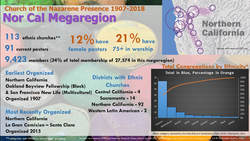 One-third of total membership is also within ethnic churches. About 12% of the ethnic churches have a female pastor. One-fifth of the ethnic churches have more than 75 in worship attendance. More than half of the ethnic churches (56%, 64) are Hispanic. By far, the majority of ethnic churches are in northern California. ResourcesThere are fourteen women serving as senior assigned pastors in the Northern California megaregion, or 8% of the total assigned pastors (174). The largest church attendance with a female pastor is 89. The median church attendance is 31 with a female pastor. Only four women have been in their current assignment for more than eight years. Half have been in their current assignments for only four years. ResourcesThere are 174 assigned senior pastors on this megaregion. Six pastors have dual assignments so there really are only 168 individual pastors. Almost one-third have been in their assignments for less than five years, and another 30% over twelve years. Median tenure for all assigned senior pastors is only seven years, assigned since 2011. Half of the female assigned senior pastors have been in their assignments since 2014. There are 41 churches without an assigned senior pastor at the time of this demographic snapshot. That's 19%, almost one-fifth, of the total active churches (217). Median worship attendance for churches with an assigned pastor is 58. Yet, in this megaregion, there is one senior assigned pastor for every 128 people in Sunday worship in a Nazarene church: 168 individual assigned senior pastors and 21,567 in average worship attendance. Concern needs to be raised over the number of vacancies (one out of five churches without a senior pastor) and the short median tenure of seven years. I wonder if there is any thought among district superintendents and pastors about a succession plan: who will follow them and when. I think the ideal of always being in one place, or even job security, challenges the notion that someone will need to follow. These numbers are concerning even before beginning to think about the number of pastors that will be needed to keep up with population growth. Ideally, there should be one pastor/church for every 10,000 people to maintain a recognizable presence in a population. Assuming that the current number of 174 pastors can be maintained (still, one-fifth short of filling all open pulpits), the following ratios can be applied. According census numbers for this megaregion: In 2010, there is one Nazarene pastor for 83,3333 people. In 2025, there will be one Nazarene pastor for 98,809 people. In 2050, there will be one Nazarene pastor for 125,595 people. Can Nazarenes realistically keep up with the population of this megaregion? ResourcesThe Northern California Region comprises the San Francisco as an anchor reaching into the Napa Valley then eastward through Sacramento to Reno. Interstate 5 transverses this population group from Redding in the north to Bakersfield in the south through the Great Valley between the Coastal Ranges and the Sierra Neveda Mountains. NOTE: The churches included in this study stay as close as possible to the shaded around below. A megaregion is a concentrated population of more than 5 million people gathered around common resources for economic trade, financial interests, education, and transportation. There is also a somewhat consistent shared meaning of symbols and values common within the population as a subculture. Think of the megaregion as a very large "city" with the cities, represented by circles in the image below, as its "neighborhoods." There are four districts (see image) including the Western Latin American district. It is notable that two churches in Fresno are 2.6 miles apart but on separate districts (Western Latin American--Puerta al Cielo and Central California--Fresno First). There have been 453 churches started or organized in the geographic area of this megaregion. 217 remain active in ministry. The most churches organized in this area occurred in two years: 1949 and 2014, each with nine churches. Only two are active from 1949, and all are still active from 2014. Hall of all churches occurred in the 1940s, 1950s, 2000s, and 2010s. Notably, a little more than one-fifth of the churches started or organized in the 1940s and 1950s are still active. Sixty-three percent of the churches started or organized in the 2000s and 2010s are still active. Seventy percent (69.5%) of all active churches were started or organized since 1990. Even still, there are nine congregations in active ministry that have been in place for over 100 years. 236 churches have been shutted with the most happening in 1995 with eighteen closings. The only years with more than ten followed in 1996, 1999, 2006 and 2007. These are also years within the expansive multiplication of churches. Just a note that closing churches in a megaregion does not always mean decline but could connote a shifting within the population The trend of churches closing with two years, seven years and twelve years remains consistent. 22% (52) of all churches closed within two years 56% (131) of all churches closed within seven years 69% (161) of all churches closed within twelve years. About one-fourth of all churches that were closed occurred after two decades of active ministry. The spikes in closings in the 1950s and 1990s are less concerning than the trough throughout the 1960s and 1970s. The data suggests a possibility during the 1960s and 1970s that there was more of a concern about counting members and attendees and the development of building programs than evaluating ministry and missional impact. The reaping of the 1990s suggests this lack of evaluation will eventually happen. 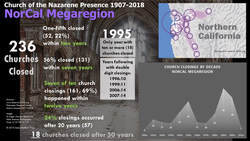 Resources |
Bio
teacher, writer, Archives
August 2022
Categories
All
|
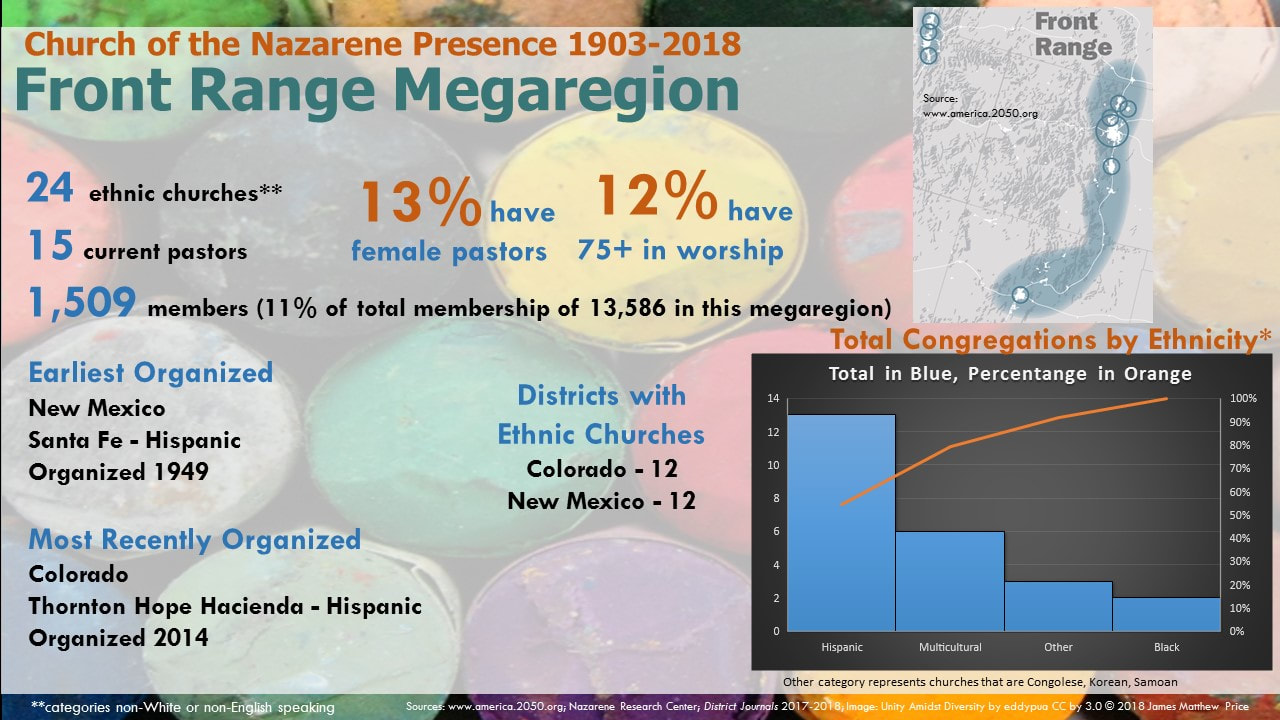
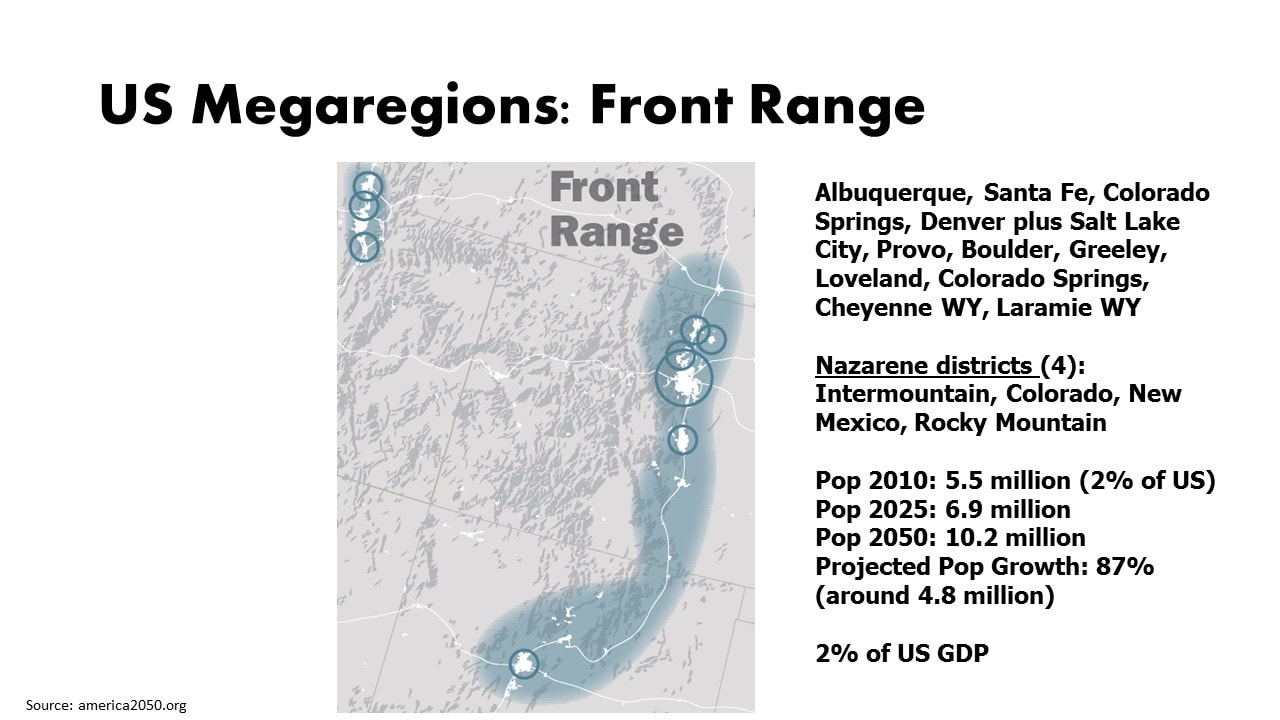
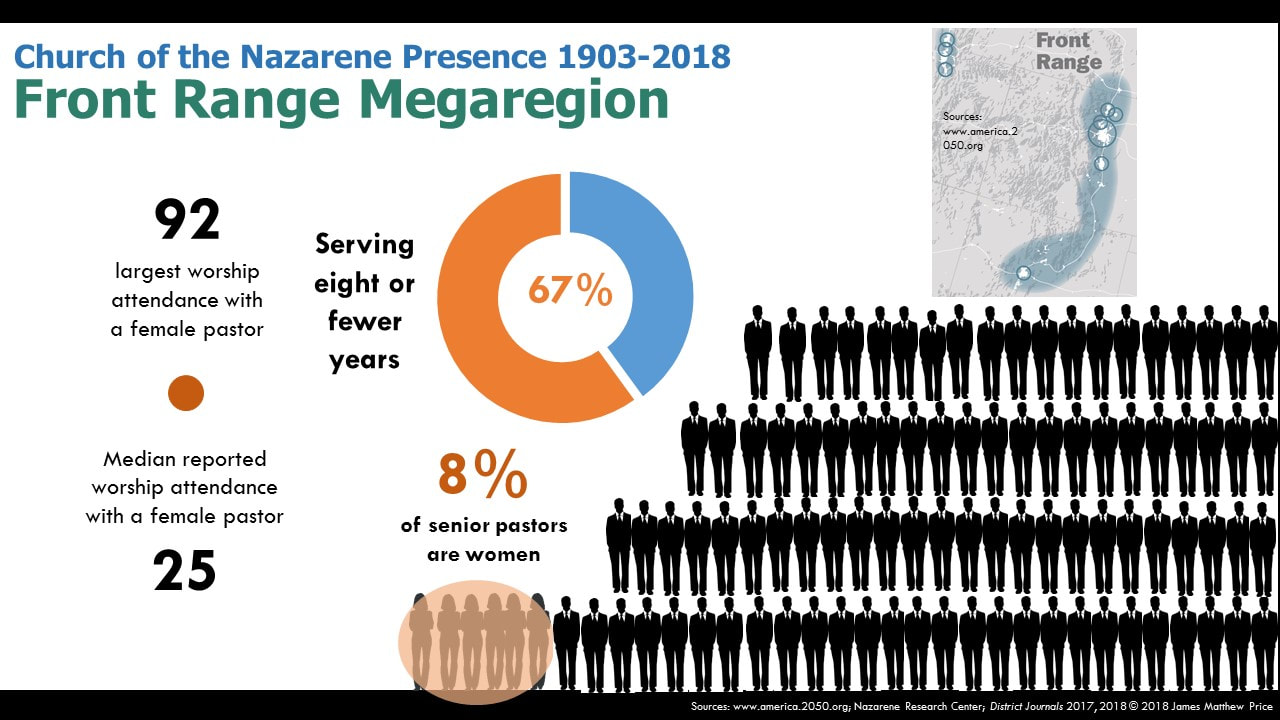
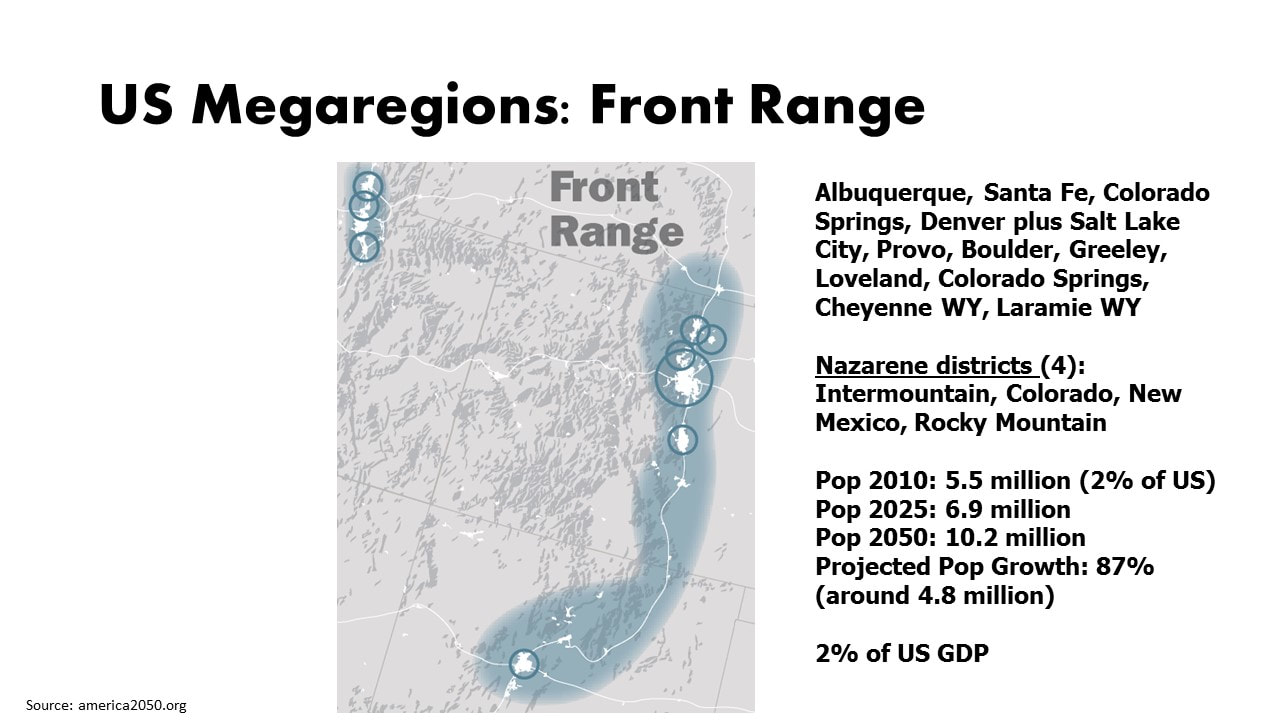
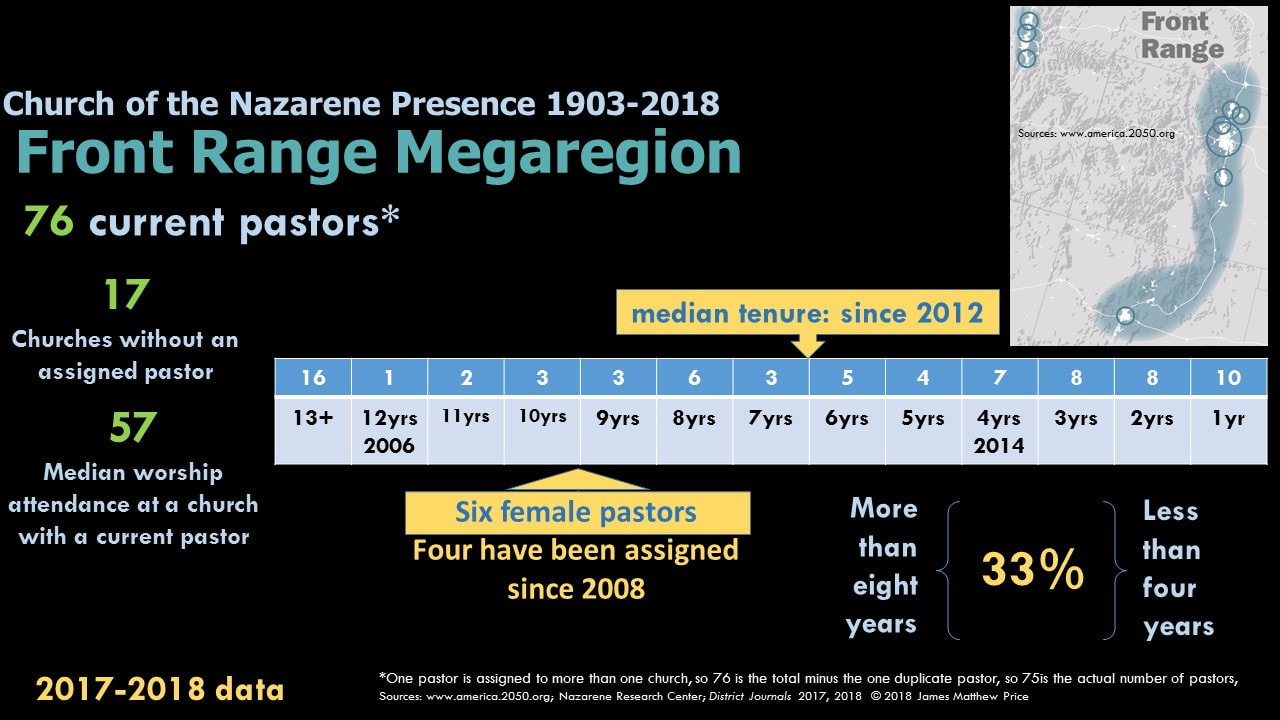
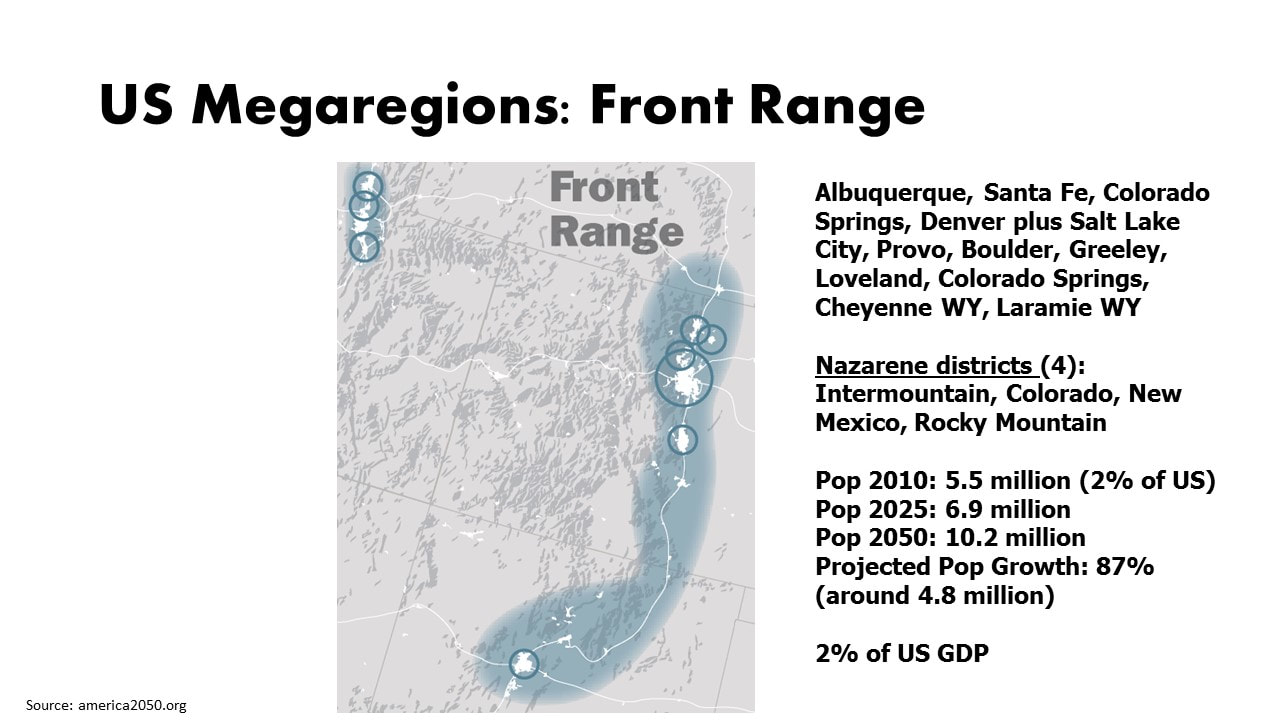
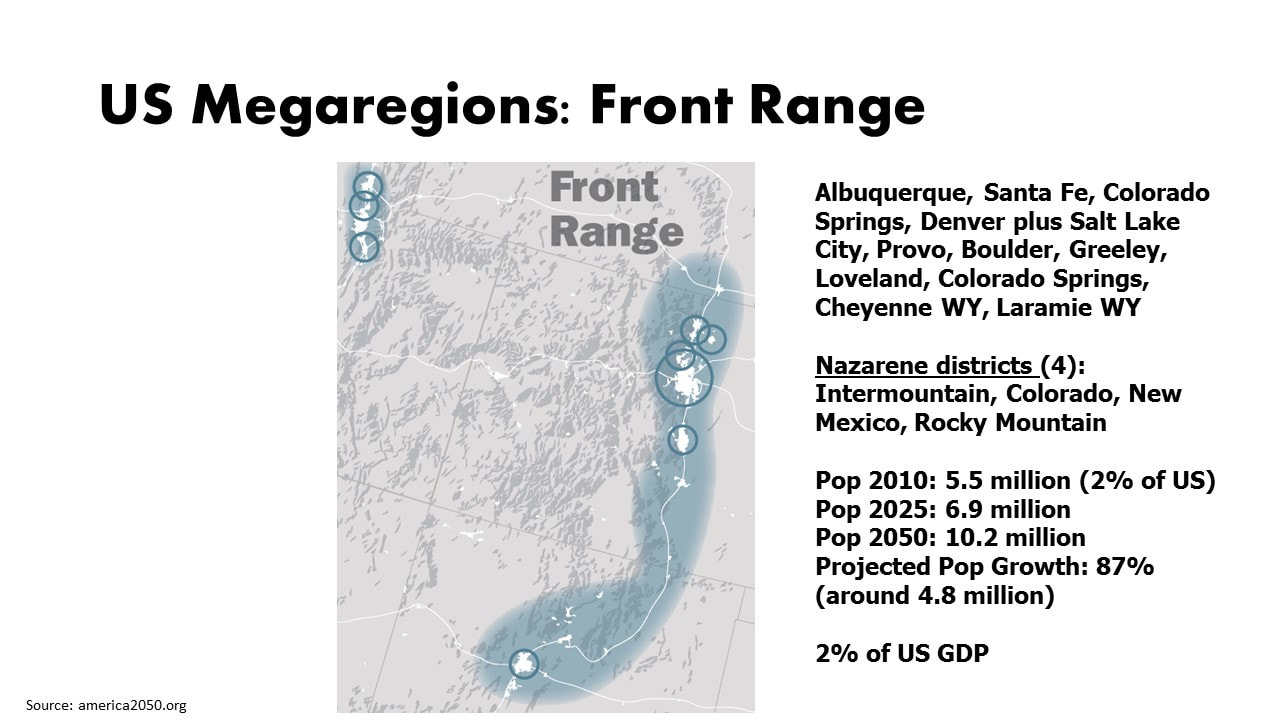
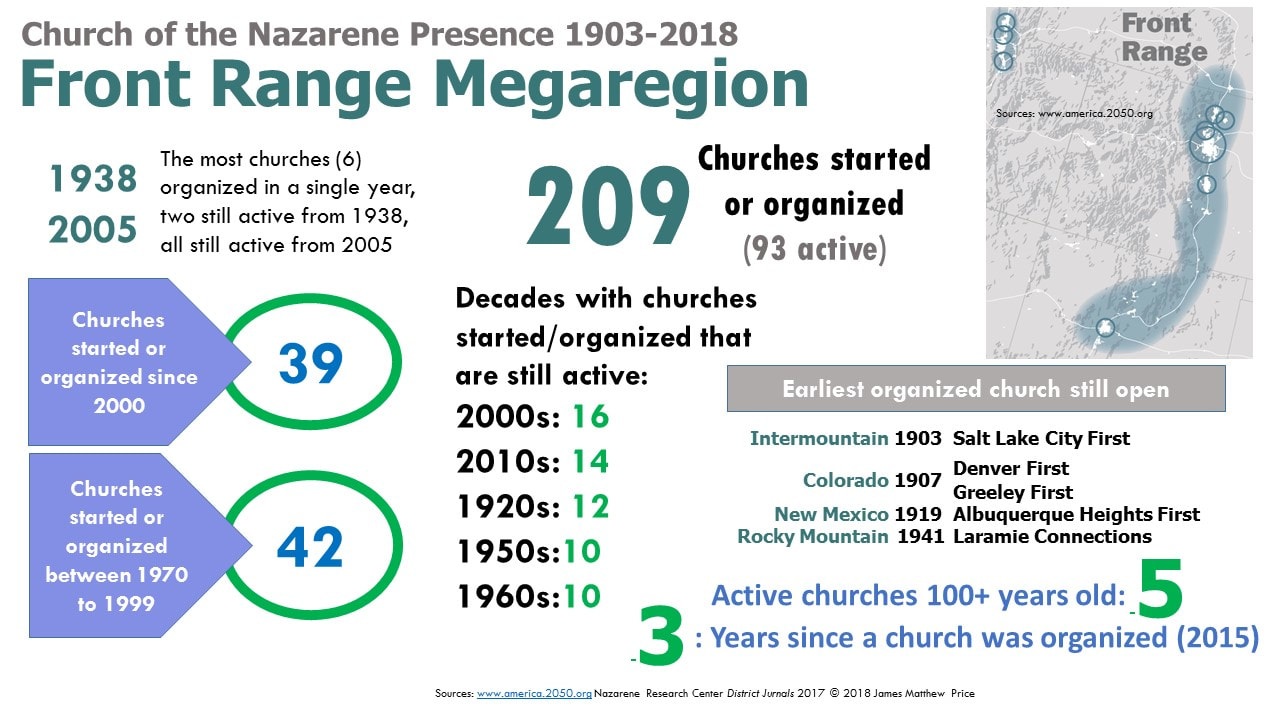
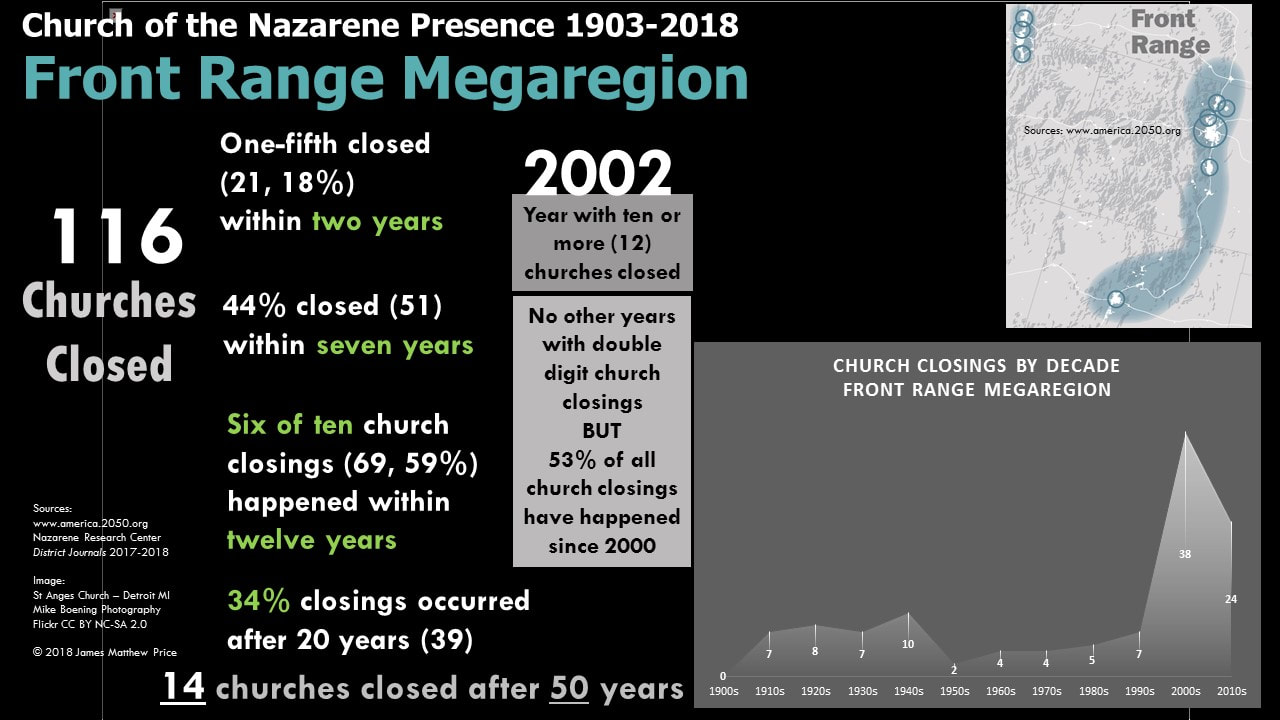
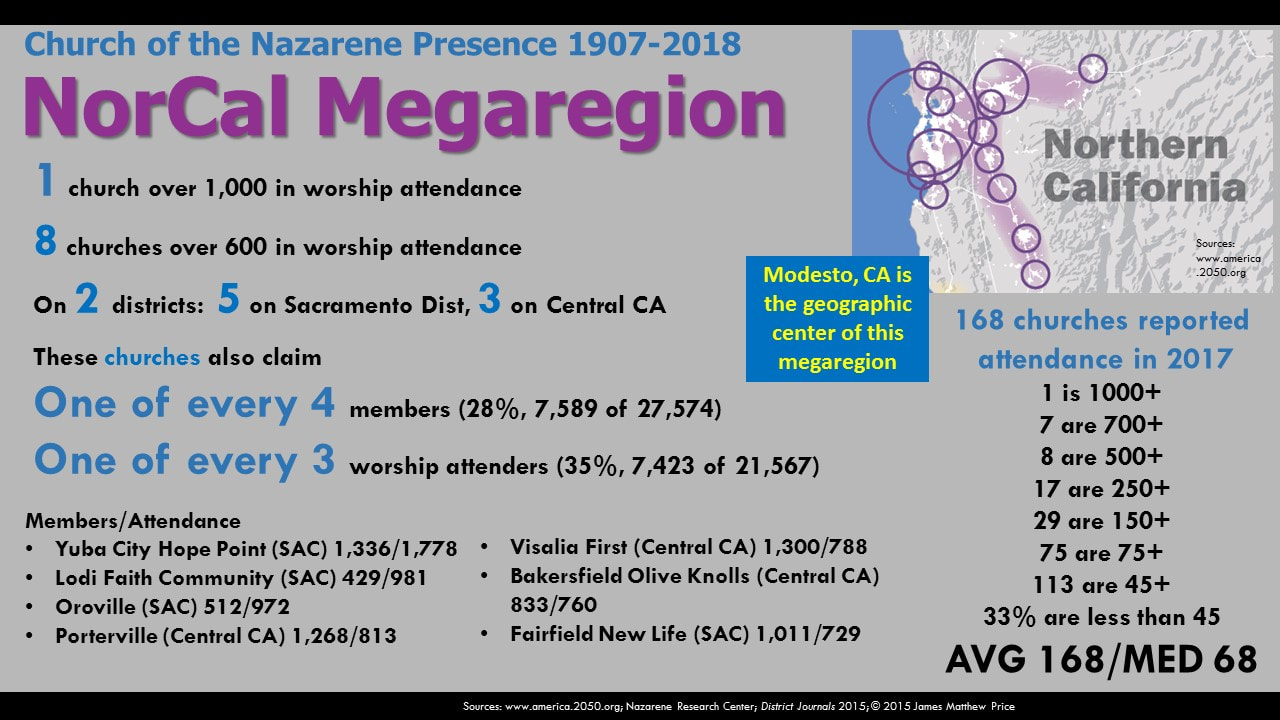
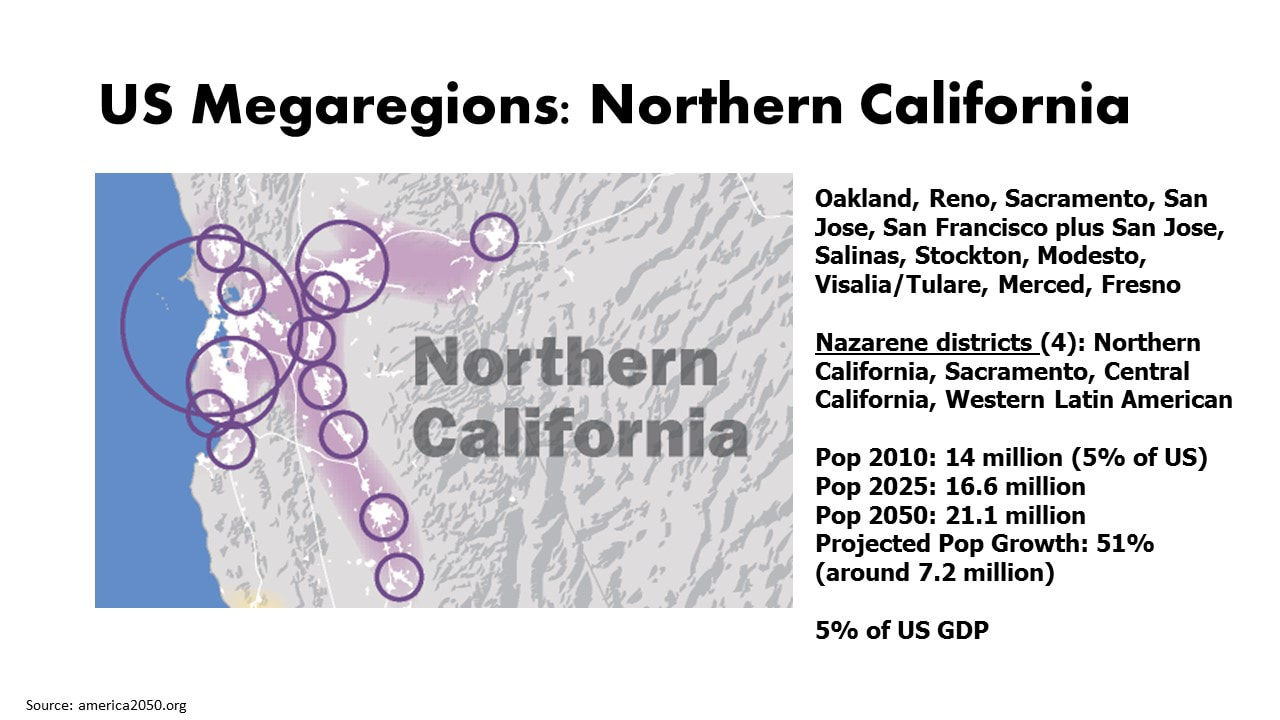
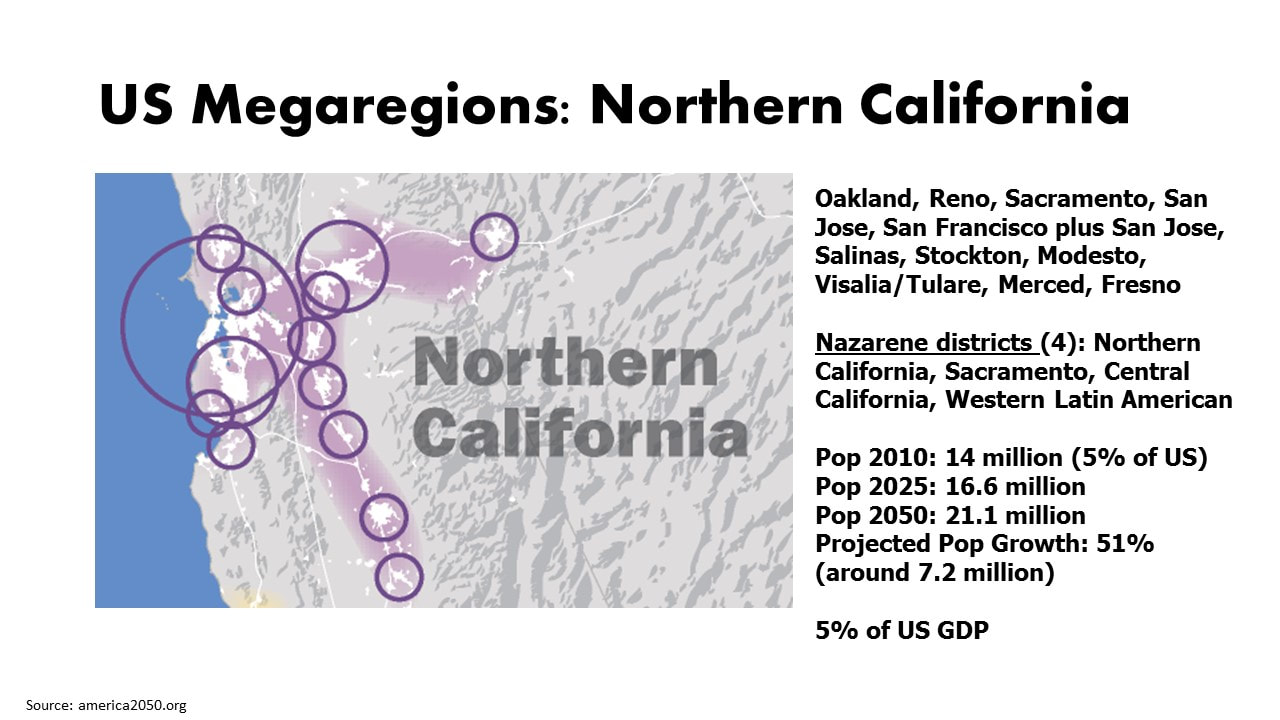
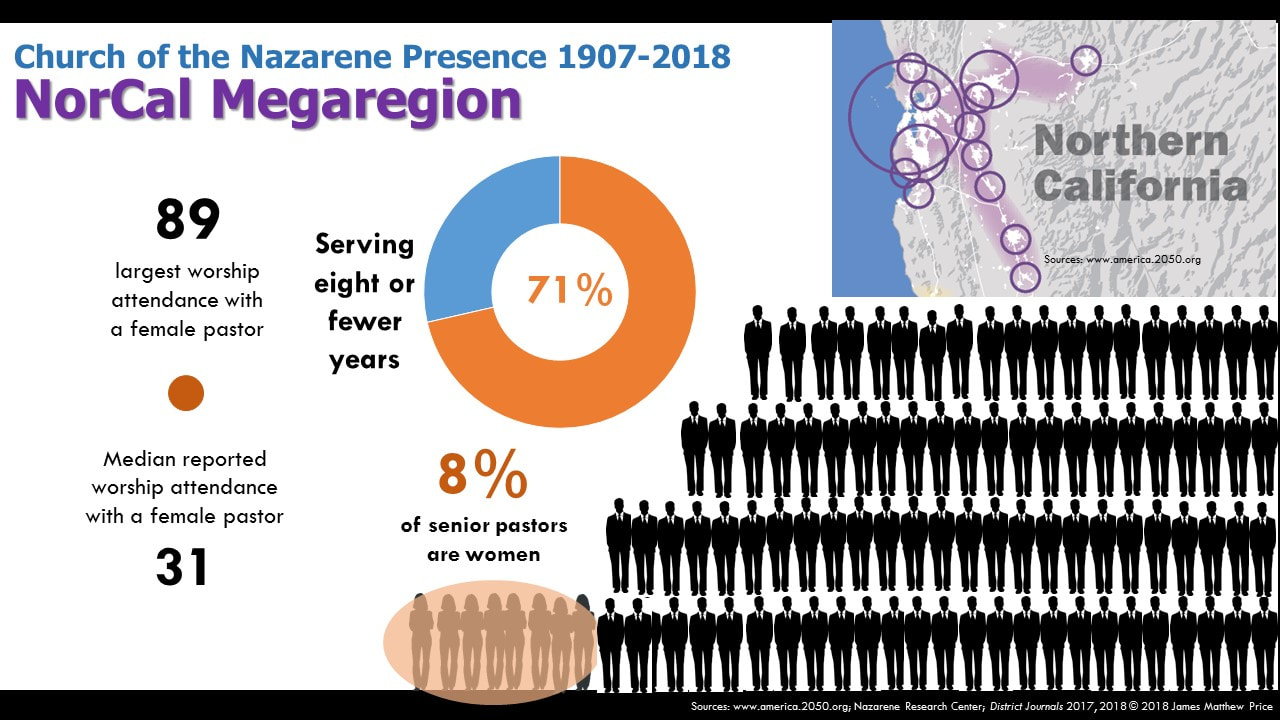
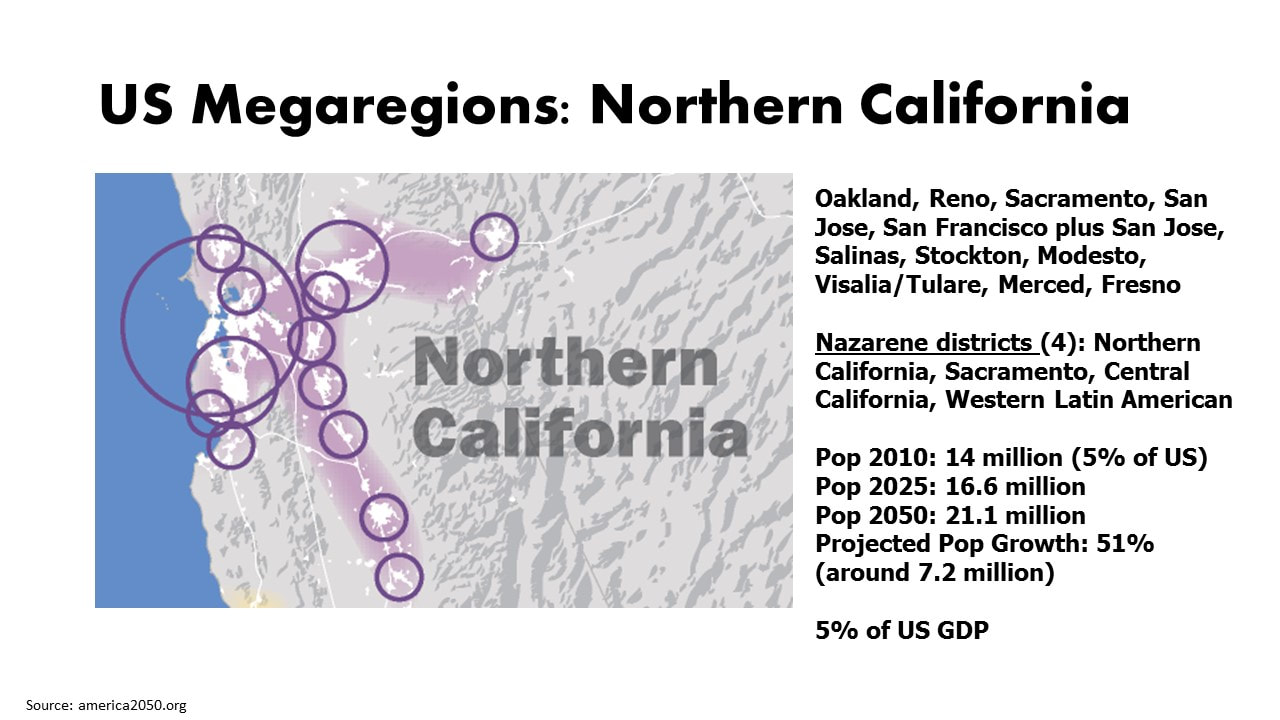
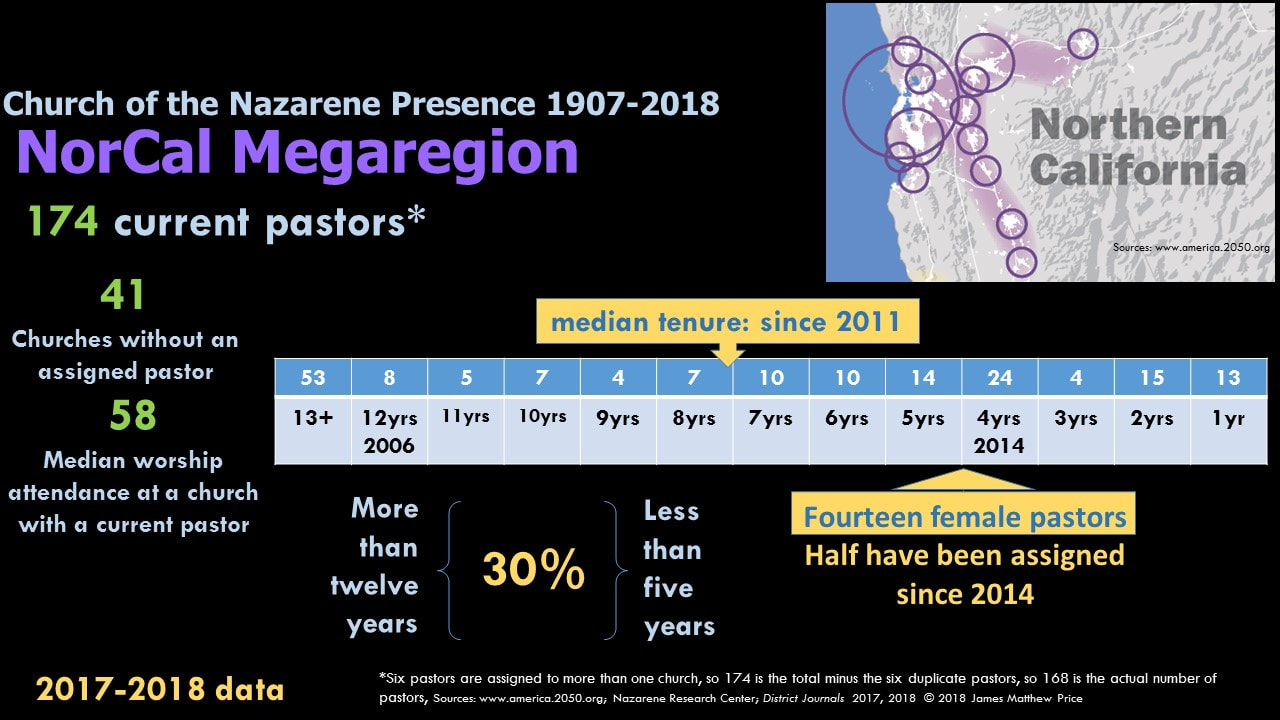
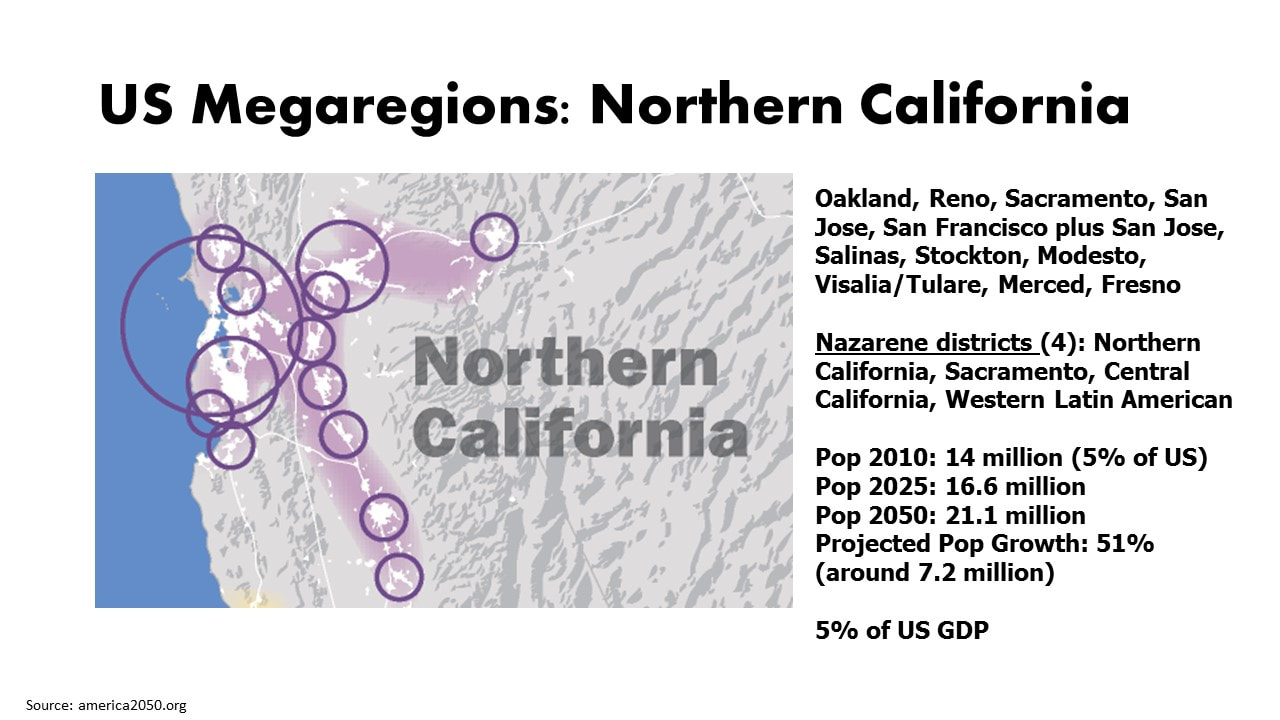
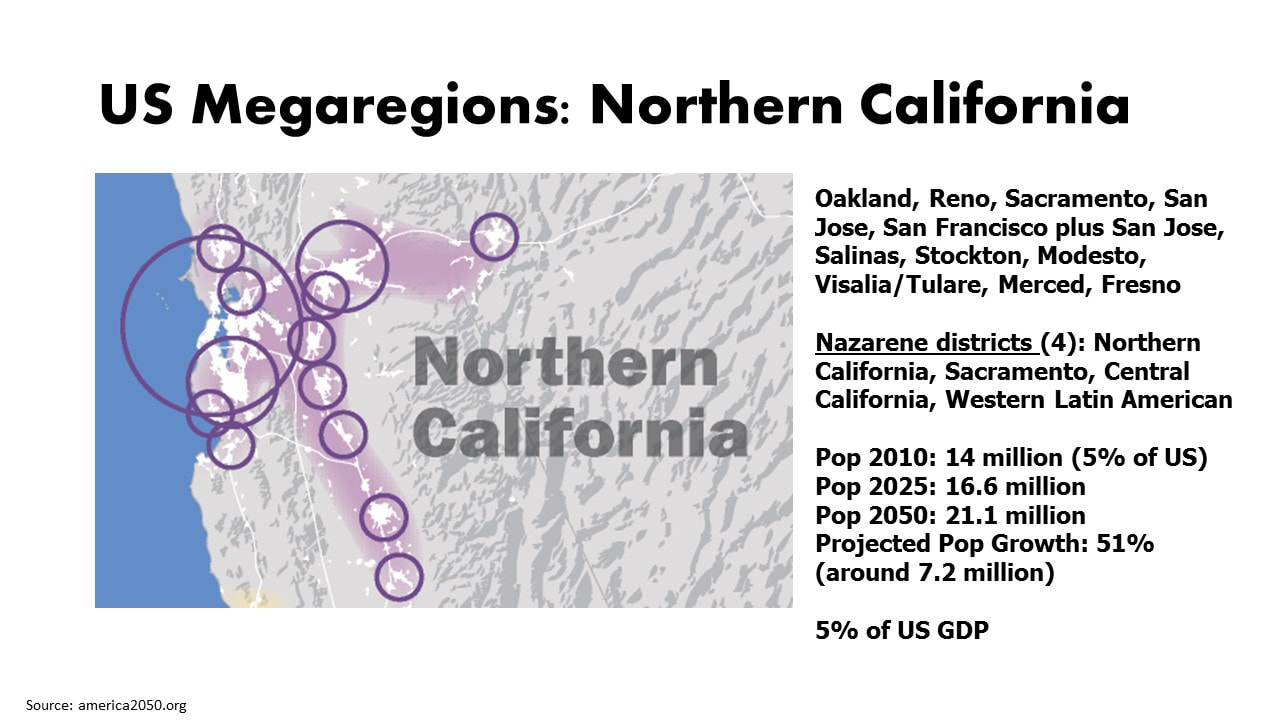
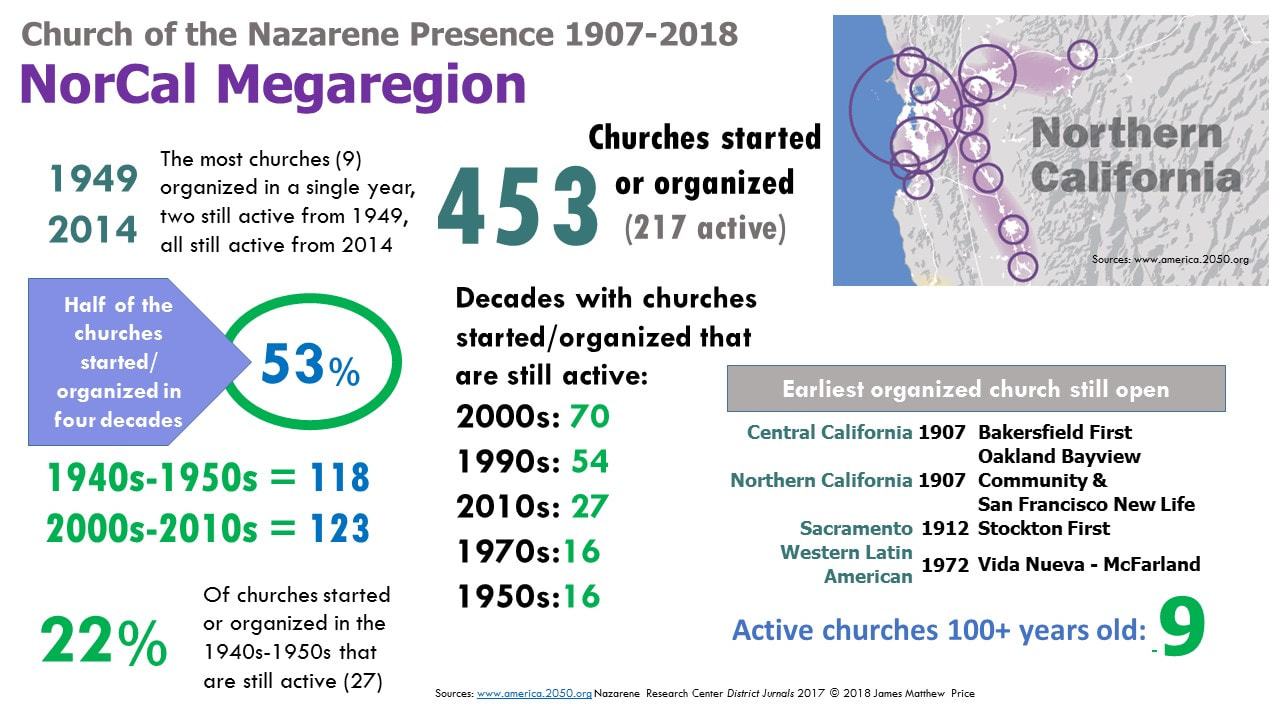

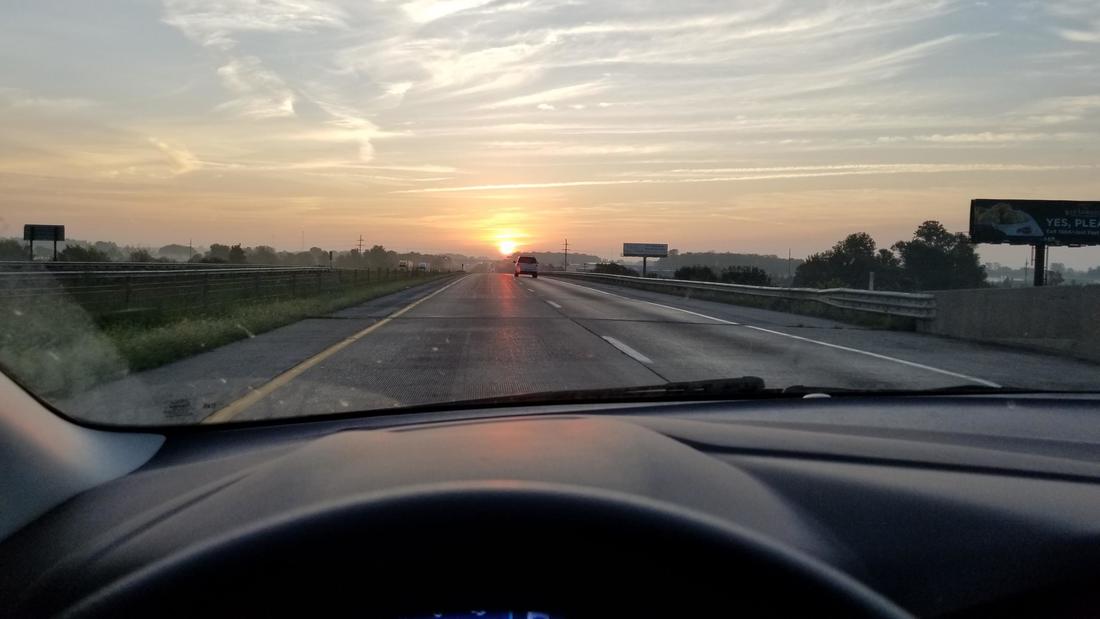

 RSS Feed
RSS Feed